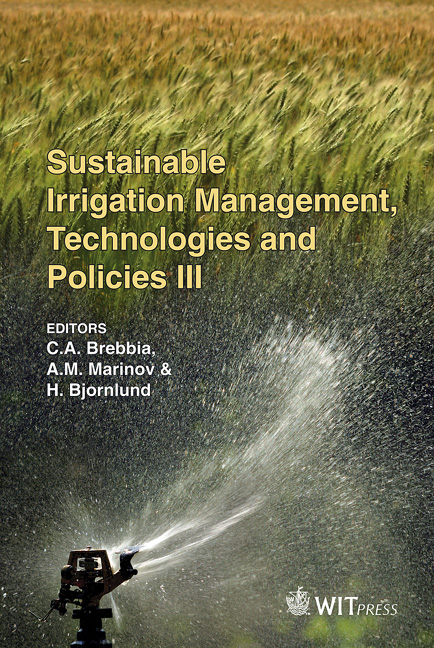Theoretical Basis And Significance Of Variance Of Discharge As A Bidimensional Variable In Microirrigation Lateral Design
Price
Free (open access)
Transaction
Volume
134
Pages
12
Page Range
109 - 120
Published
2010
Size
309 kb
Paper DOI
10.2495/SI100101
Copyright
WIT Press
Author(s)
E. R. Detomini & J. A. Frizzone
Abstract
In order to support the theoretical basis and contribute to the improvement of educational capability issues relating to irrigation systems design, this work presents an alternative deduction for variance of the discharge as a bidimensional and independent random variable. Then, a subsequent brief application of an existing model is applied for statistical design of laterals in micro-irrigation. The better manufacturing precision of emitters allows lengthening of a lateral for a given soil slope, although this does not necessarily mean that the statistical uniformity throughout the lateral will be more homogenous. Keywords: error theory, statistical approach, manufacturing coefficient. 1 Introduction In microirrigation systems, generally the longer the lateral pipeline implemented in a sub-main unit is, the less the final cost of the designed project and hence the overall profitability of the system is improved. In practice, two approaches may be used to optimise the lateral length while maintaining the desirable uniformity of applied water: hydraulic and statistical. Considering the latter, the coefficient of variation of pressure head (CVHp) term appears in the model due to the concept of discharge variance, where the source-point discharge is assumed to be susceptible to oscillations in both the pressure head (H) and emitter coefficient (K). The latter is inherent to the existing variability of emitters coming from the
Keywords
error theory, statistical approach, manufacturing coefficient





